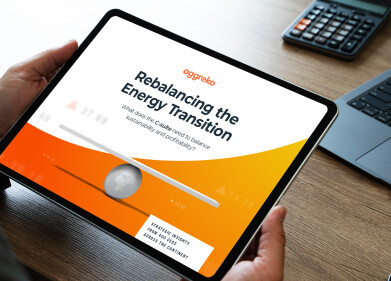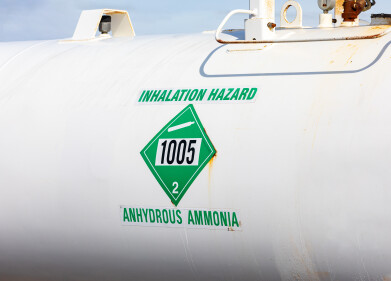Fuel for thought
The Importance of Early Engagement with ASTM and Standard Development
Sep 02 2018
(FROM STANDARDIZATION NEWS MAGAZINE)
Let’s say you work in R&D in an emerging field like exoskeletons — wearable, high-tech equipment that helps factory workers, patients, and others. Some of the prototypes you’ve built are showing promise, and you’re refining designs.
Some bigger questions occur to you — questions that you know your industry peers around the world are probably confronting, too:
• How do we show and define a particular task that can be performed by any given exoskeleton?
• What are the safety and ergonomics issues that everyone in the industry could consider and test for?
• Are there technical challenges that everyone in the industry can collectively tackle regarding design, manufacturing, or even maintenance?
In other words, could new consensus standards help drive innovation and overall business success?
While products like exoskeletons may ultimately improve the quality of life for millions of people, there’s often a gap between the idea and the reality, the promise and the performance — especially early in a technology’s evolution.
Standards bridge that gap by encouraging stakeholders to begin thinking about the guides, practices, specifications, and test methods they will need to commercialize an emerging technology as early as possible.
But even before engaging in a roadmapping exercise to start creating new standards, an industry should look to the standards community for initial guidance and support.
ASTM International is one example of a science-based, data-driven forum where leading experts from across an emerging industry can start to discuss ways standards might be beneficial.
“We’re now very, very diligent about telling prospective and existing members that they have to start thinking about this as early as possible,” says Pat Picariello, a director in technical committee operations. “Before you even decide you want to develop standards, you’ve got to figure out if standards exist and, if so, how they can help you. If you don’t go through that exercise before you launch any standards effort, you’re starting off behind an eight ball the size of Mt. Rushmore.”
Early Engagement Success #1
Sometimes, all it takes is a phone call. In this case, an expert in exoskeleton technology at the U.S. National Institute of Standards and Technology, Roger Bostelman, contacted Christine DeJong, director of business development at ASTM International, in December 2016.
Bostelman knew that ASTM International had established a new committee to create standards for automatic guided vehicles, and he was wondering if ASTM could help a new group of industry leaders in the field of exoskeletons who had been testing some of their technologies at NIST’s facilities in Gaithersburg, Maryland.
Bostelman described how exoskeleton entrepreneurs were quickly building products that could enhance strength, mobility, and endurance, but they weren’t seeing many standards that could provide a solid technical foundation for the industry. DeJong, other ASTM International staff, and industry stakeholders talked through the need and whether ASTM would be the logical home for such an effort.
By the fall of 2017, the new exoskeletons and exosuits committee (F48) was born with the blessing of ASTM International’s board of directors.
Christopher Reid, Ph.D., a Boeing engineer who serves as the first chairman of the subcommittee on human factors and ergonomics (F48.02), says, “The earlier we can get standards implemented, the sooner we can have better designs on the market. A common set of standards can improve safety, effectiveness, and reliability for users, and minimize cost impacts of poor designs on manufacturers.”
Already, Reid’s subcommittee is proactively engaging more stakeholders in the research community to help identify needs, gaps, and solutions that could be incorporated into design requirements for future exoskeletons.
Early Engagement Success #2
When industry sees the potential for their products to evolve in a way that reduces both costs and risks, early engagement between industry and standards developers is crucial.
In recent years, many pieces of medical equipment have shifted from stainless steel and glass to “single-use systems” often made of plastic. As a result, some tanks, filters, connectors, and other components and devices can be provided presterilized. This advancement helps reduce risks from bacteria, microbes, and cross-contamination while also lowering costs due to less need for extensive cleaning equipment and supplies.
Many years ago, ASTM International’s pharmaceutical and biopharmaceutical products manufacturing committee (E55) created a standard guide for manufacturing systems and equipment (E2500). That guide generally covers specification, design, and verification for traditional equipment.
Experts like Duncan Low, who worked at Amgen for 14 years, began to think about whether that same committee might be able to apply its experience to single-use systems. He says, “I think you can anticipate areas where standards will be needed, but we need to know that the technology will meet requirements of robustness and reproducibility before we start developing them.”
When technologies and prototypes began to show that they could indeed meet those criteria, committee members — representatives of the pharmaceutical and biopharmaceutical industry as well as suppliers and regulators — with the support of ASTM International staff, immediately began devoting more time to potential standards to support single-use systems.
A major result of this was a new guide for specification, design, verification, and application of single-use systems (E3051), based in part on E2500.
Early Engagement Success #3
The benefits of early engagement are clear when vastly different types of professionals must interact in order to ensure that any standards eventually created have relevance. Engineers and first responders who share an interest in robotics provide an excellent example.
“Often, the engineering team has only a scant idea of what capabilities are really required for a given mission,” says Adam Jacoff, robotics research engineer in NIST’s Intelligent Systems Division. “Two-way communication between mission-driven emergency responders and engineers is crucial from Day One.”
NIST and others involved in the committee on homeland security applications (E54) and its response robots subcommittee (E54.09) have embraced that collaborative spirit for over a decade.
As a result, engineers have advanced valued standards and tests for robot mobility, dexterity in complex terrains, and new mapping technologies. The first responders often give feedback to engineers on which of these standards are most useful and relevant to them in the field, setting thresholds in each area and gaining a better understanding of capabilities and acceptable trade-offs.
“This ongoing dialogue has been — and continues to be — extremely valuable in guiding engineering decisions regarding size, cost, capability, reliability, etc.,” says Jacoff, who chairs E54.09.
When to Think about Standards
History is littered with the failures of innovative companies that waited too long — and spent too much money — before sitting down at the standards development table. Thinking about standards early in the life cycle of a new product or technology is crucial to ensuring a clear, effective, and efficient path to marketplace innovation. In the next article, we’ll explore roadmapping — a planning technique that fills in the gaps in knowledge and helps ensure the right standards are developed at the right time with the right stakeholders.
Digital Edition
PIN 25.5 Oct/Nov 2024
November 2024
Analytical Instrumentation - Picturing Viscosity – How Can a Viscometer or a Rheometer Benefit You? - Sustainable Grease Formulations: Evaluating Key Performance Parameters and Testing Method...
View all digital editions
Events
Jan 20 2025 San Diego, CA, USA
Jan 22 2025 Tokyo, Japan
Jan 25 2025 San Diego, CA, USA
SPE Hydraulic Fracturing Technology Conference and Exhibition
Feb 04 2025 The Woodlands, TX, USA
Feb 05 2025 Guangzhou, China



















